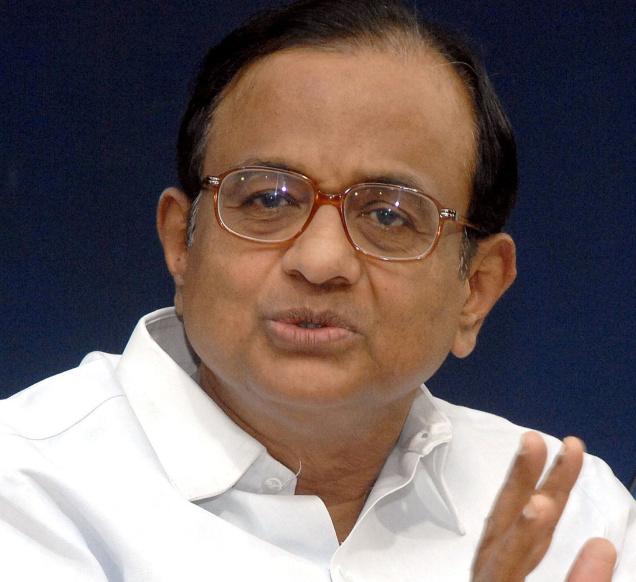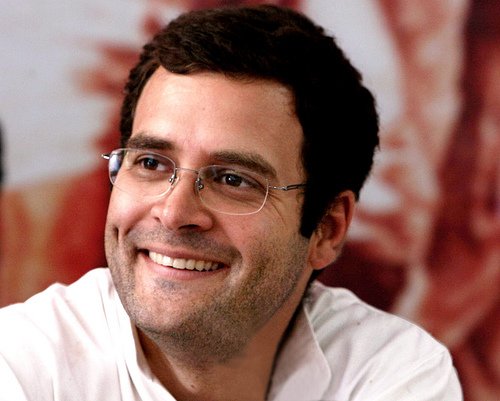
The former finance minister P Chidambaram writes a weekly column for The Indian Express newspaper. The latest column published on April 26, 2015, was headlined Across the Aisle: Inflation is bad, but is deflation good?.
Normally I never read economic columns written by politicians for the simple reason that you can never expect them to take a line which is different from their party line. And given that one knows what the party line is on most occasions, there is no point in reading the column. In most cases the politician tries to come up with reasons in order to defend the party line, irrespective of the fact whether that makes good economics or not.
But on this occasion I did read Chidambaram’s piece because the word ‘deflation’ caught my attention. The headline of the piece suggests that deflation is not good. Deflation is the opposite of inflation. Inflation is a situation in which prices are rising. Deflation is a situation in which prices are falling. Why is deflation not good? Once people figure out that prices are falling, they are likely to keep postponing their consumption in the hope of getting a better deal in the days to come.
If this happens, business revenues will most likely fall and so will economic growth. As business revenues fall, companies may try and maintain profits by firing people, among other things.
Those who get fired will spend money only on the most important things. Further, the firings will also have an impact on others who will fear that they might also get fired and in the process postpone expenditure. And so the deflationary cycle will work.
Hence, deflation is bad.
The only thing is that Chidambaram does not define deflation as a scenario of falling prices. As he writes: “Deflation and its consequences: The decline in the rate of inflation could be attributed to many reasons.”
Chidambaram essentially talks about a fall in the rate of inflation and defines that as deflation. A fall in the rate of inflation means that prices are rising, only that they are rising at a slower rate than they were earlier. This is very different from prices falling. The term Chidambaram should have used is disinflation, which essentially refers to a fall in the rate of inflation.
A former finance minister and a Harvard MBA to boot, should not be making a mistake in the usage of these terms. This is Economics 101.
In his column Chidambaram goes on to defend the economic policies followed by the Congress led UPA government between 2004 and 2014. Chidambaram writes that the current government has added to the woes of the farmer by “a paltry increase in Minimum Support Price (MSP), inefficient procurement, increase in prices of fertilisers, poor compensation for lost crop etc.” He goes on to suggest that the UPA tried to help the farmer in different ways: “introduction of MGNREGA in 2006 to supplement farm income/wages; farm loan waiver in 2008 to give partial relief from past debt; and generous increases in MSP between 2004 and 2014.”
Let’s look at these points one by one starting with the debt waiver which was made in 2008. The total amount of debt waived off to farmers was Rs 71,680 crore. While this one time waiver did not bring down any bank, it built in a huge moral hazard into the system. Economist Alan Blinder writes in After the Music Stopped that the: “central idea behind moral hazard is that people who are well insured against some risk are less likely to take pains (and incur costs) to avoid it.”
The message that was sent to farmers was that in the future there was no need to repay your loans because eventually the government would waive it off. In a country where the banking penetration is low and that remains starved of credit, this was a very short sighted measure aimed at the May 2009 Lok Sabha elections.
Mahatma Gandhi National Rural Employment Guarantee Act(MGNREGA) was launched in 200 of the most backward districts of the country on February 2, 2006. It was extended to all rural districts from April 1, 2008. The scheme aims at providing at least 100 days of guaranteed employment in a financial year to every household whose adults are willing to do unskilled manual work. The trouble was that MGNREGA essentially became another scheme where money was simply given away without any substantial assets being created.
As T H Chowdhary wrote for The Hindu Business Line in December 2011 “Villages cannot sustain so many unskilled labourers and not-so-literate labour. By creating useless “work” we are promoting dependency among the unfortunate rural, illiterate and unskilled population…An example of the village Angaluru in Krishna district will illustrate how good money is being thrown away for bad results. Out of 1,000 families, 800 had registered themselves as BPL, seeking work under NREGA. So far, it was 100 days at Rs. 100 per day. Even at this, 80,000 mandays of useful work in a year is impossible in a village and that too, year after year.” Hence, MGNREGA essentially became an exercise of giving away money without any comparable increase in production and this led to high inflation.
These moves didn’t help the Congress led UPA government win many votes either. As Swaminathan Aiyar wrote in a recent column in The Times of India: “The Congress claimed that its farm loan waiver and MGNREGA (its rural job scheme) won it the 2009 election. Really? Congress won only nine of 72 seats in three very poor states where these schemes should have helped most — Bihar, Chhattisgarh and Odisha.”
Chidambaram also wrote about the generous increase in the minimum support price or wheat and rice between 2004 and 2014. The MSP is the price at which the government buys rice and wheat from the farmers, through the Food Corporation of India(FCI) and other state government agencies.
Between 2005-2006 and 2013-2014, the MSP of wheat was increased at an average rate of 14% per year. In 2005-2006, the MSP for common paddy(rice) was Rs 570 per quintal. By 2013-2014 this had shot up to Rs 1310 per quintal, an increase in price of around 11% per year.
This rapid increase in the MSPs led to very high inflation in general and food inflation in particular, between 2008 and 2014. As economist Surjit Bhalla put it in a November 2013 column in The Indian Express “For each 10 per cent rise in previous years’ procurement prices, there is a predicted 3.3 per cent increase in the current year CPI…When the government raises the MSP, the prices of factors of production involved in the production of MSP products — land and labour — also go up.” Food inflation hurts the poor the most. Half of the expenditure of an average Indian family is on food. In case of the poor it is 60% (NSSO 2011).
To conclude, if the policies of the Congress led UPA were so pro-farmer, why did the lose the 2014 Lok Sabha election, so badly? Guess, Chidambaram’s next column can try answering that question as well.
The column originally appeared on The Daily Reckoning on Apr 28, 2015


